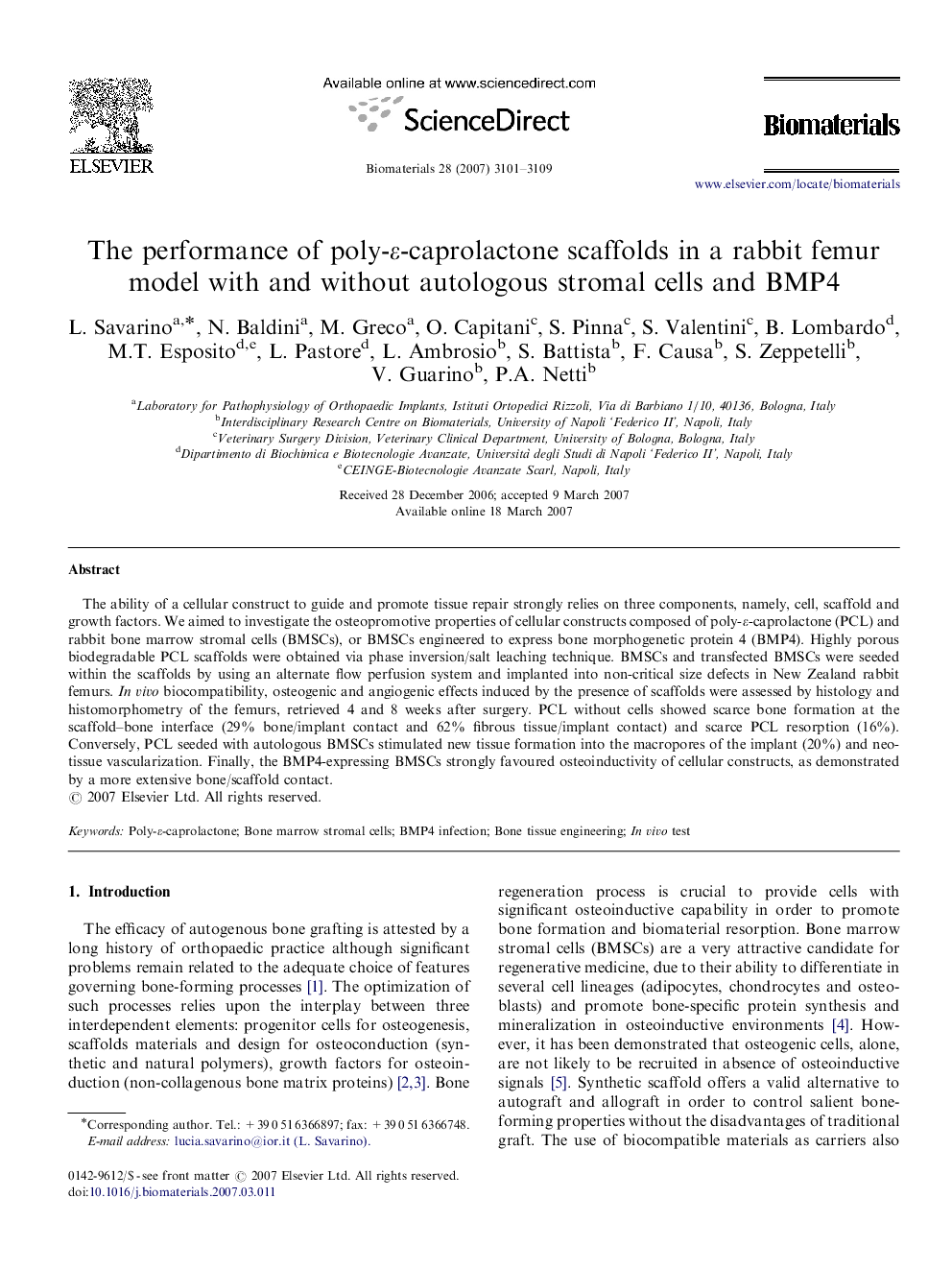| کد مقاله | کد نشریه | سال انتشار | مقاله انگلیسی | نسخه تمام متن |
|---|---|---|---|---|
| 10729 | 700 | 2007 | 9 صفحه PDF | دانلود رایگان |

The ability of a cellular construct to guide and promote tissue repair strongly relies on three components, namely, cell, scaffold and growth factors. We aimed to investigate the osteopromotive properties of cellular constructs composed of poly-ε-caprolactone (PCL) and rabbit bone marrow stromal cells (BMSCs), or BMSCs engineered to express bone morphogenetic protein 4 (BMP4). Highly porous biodegradable PCL scaffolds were obtained via phase inversion/salt leaching technique. BMSCs and transfected BMSCs were seeded within the scaffolds by using an alternate flow perfusion system and implanted into non-critical size defects in New Zealand rabbit femurs. In vivo biocompatibility, osteogenic and angiogenic effects induced by the presence of scaffolds were assessed by histology and histomorphometry of the femurs, retrieved 4 and 8 weeks after surgery. PCL without cells showed scarce bone formation at the scaffold–bone interface (29% bone/implant contact and 62% fibrous tissue/implant contact) and scarce PCL resorption (16%). Conversely, PCL seeded with autologous BMSCs stimulated new tissue formation into the macropores of the implant (20%) and neo-tissue vascularization. Finally, the BMP4-expressing BMSCs strongly favoured osteoinductivity of cellular constructs, as demonstrated by a more extensive bone/scaffold contact.
Journal: Biomaterials - Volume 28, Issue 20, July 2007, Pages 3101–3109